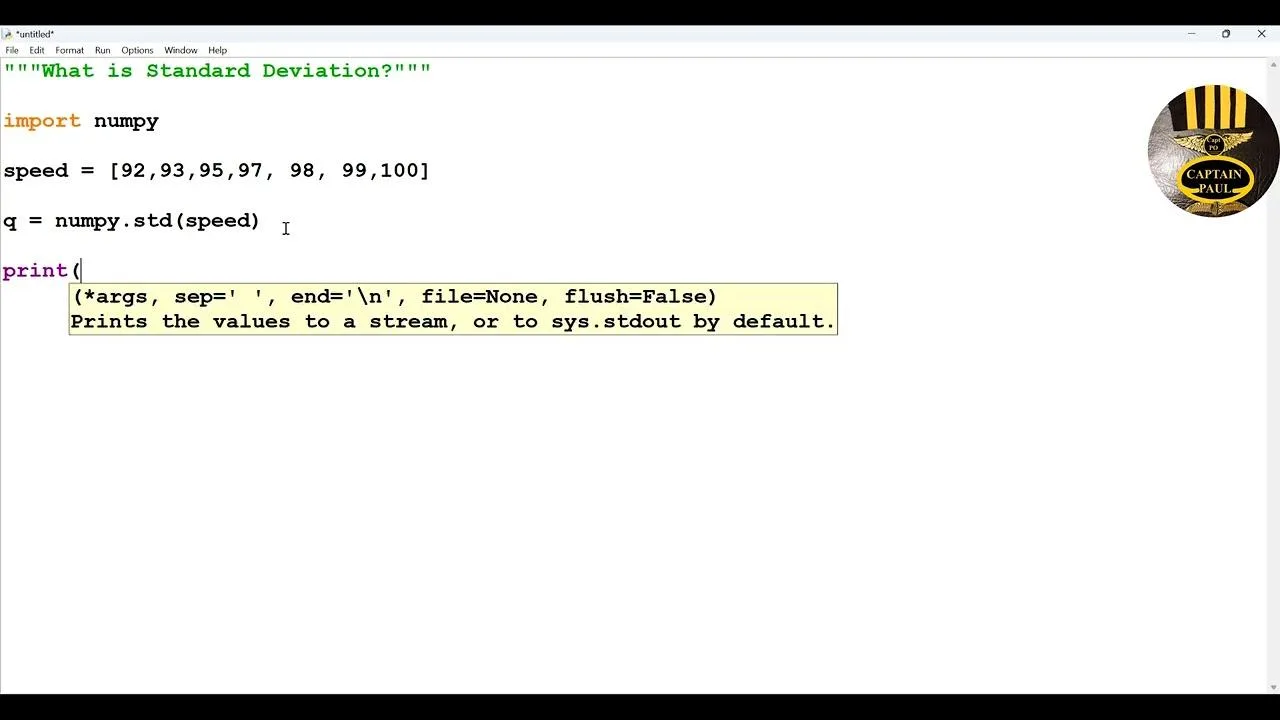Standard deviation is like the spice in your data, showing how spread out the values are. Low standard deviation means the numbers are cozy together, while high means they’re all over the place. Just use NumPy’s std() method to find it. Easy peasy! 😎📊 #DataScience #NumPy #MachineLearning
Table of Contents
Toggle📊 Standard Deviation Overview
Standard deviation is a number that describes how spread out values are. Low standard deviation means that most of the numbers are close together or close to the average, while high standard deviation indicates that the values are spread out over a wide range.
🎯 Coding Standard Deviation
To demonstrate the process of finding standard deviation, let’s begin by importing the necessary elements and creating an array of speed values for seven cars.
| Number | Speed |
|--------|-------|
| 1 | 92 |
| 2 | 93 |
| 3 | 95 |
| 4 | 97 |
| 5 | 98 |
| 6 | 99 |
| 7 | 100 |
Next, we use the NumPy std() method to calculate the standard deviation from the speed values.
Q = np.std(speed)
print(Q)
📈 Analysis of Results
Upon running the code, we obtain the result for the standard deviation. In this case, the outcome reflects a low standard deviation, indicating that the numbers are indeed close to the average. To validate this, we calculate the average of the speed values and observe their proximity to the average.
average = np.mean(speed)
print(average)
The output demonstrates that the numbers are very close to the average, confirming a low standard deviation.
Conclusion
In conclusion, this tutorial has provided a clear understanding of standard deviation and demonstrated its application using the NumPy std() method in Python. We hope you found this tutorial helpful and wish you a great day ahead. Goodbye for now!
Related posts:
- Expert: Prabowo tries hard not to be emotional.
- Python NumPy for Machine Learning | Beginner’s Complete Crash Course in NumPy
- Get your FREE NOVA VPN for Oi, Tim, Claro, Vivo. Access Free Fire, COD Mobile, and more with ease. Fast, secure, and totally free!
- Comparison of machine learning performance between Apple M1 Pro and M3, M3 Pro, M3 Max models.
- What is Artificial Intelligence? Explained by Mike Wooldridge
- Experiencing Junk Overload? Learn How to Clear Your iPhone Cache and Free Up Space with These Easy Tips for 2024.







